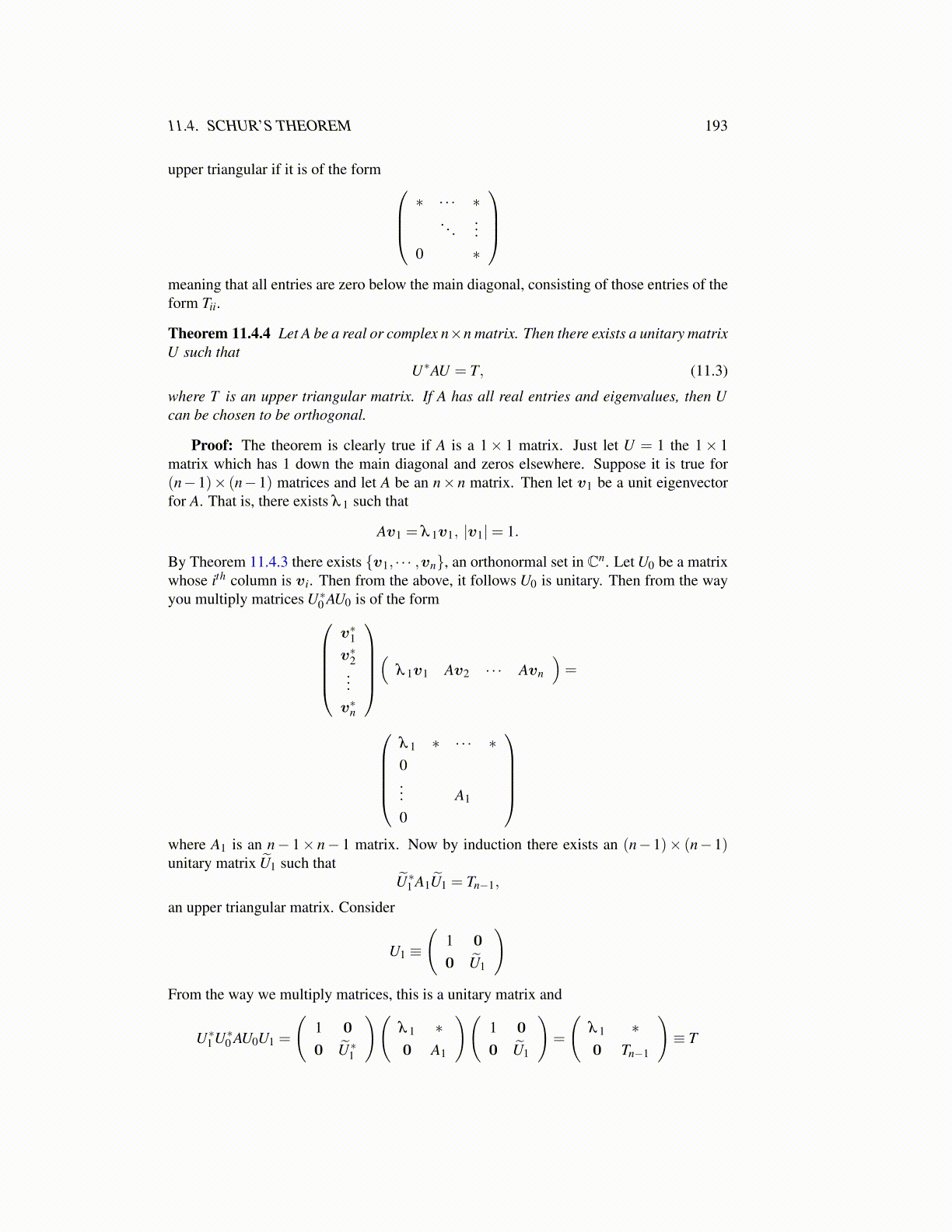
11.4. SCHUR’S THEOREM 193
upper triangular if it is of the form ∗ · · · ∗
. . ....
0 ∗
meaning that all entries are zero below the main diagonal, consisting of those entries of theform Tii.
Theorem 11.4.4 Let A be a real or complex n×n matrix. Then there exists a unitary matrixU such that
U∗AU = T, (11.3)
where T is an upper triangular matrix. If A has all real entries and eigenvalues, then Ucan be chosen to be orthogonal.
Proof: The theorem is clearly true if A is a 1× 1 matrix. Just let U = 1 the 1× 1matrix which has 1 down the main diagonal and zeros elsewhere. Suppose it is true for(n−1)× (n−1) matrices and let A be an n× n matrix. Then let v1 be a unit eigenvectorfor A. That is, there exists λ 1 such that
Av1 = λ 1v1, |v1|= 1.
By Theorem 11.4.3 there exists {v1, · · · ,vn}, an orthonormal set in Cn. Let U0 be a matrixwhose ith column is vi. Then from the above, it follows U0 is unitary. Then from the wayyou multiply matrices U∗0 AU0 is of the form
v∗1v∗2...v∗n
(
λ 1v1 Av2 · · · Avn
)=
λ 1 ∗ · · · ∗0... A1
0
where A1 is an n− 1× n− 1 matrix. Now by induction there exists an (n−1)× (n−1)unitary matrix Ũ1 such that
Ũ∗1 A1Ũ1 = Tn−1,
an upper triangular matrix. Consider
U1 ≡
(1 0
0 Ũ1
)From the way we multiply matrices, this is a unitary matrix and
U∗1 U∗0 AU0U1 =
(1 0
0 Ũ∗1
)(λ 1 ∗0 A1
)(1 0
0 Ũ1
)=
(λ 1 ∗0 Tn−1
)≡ T